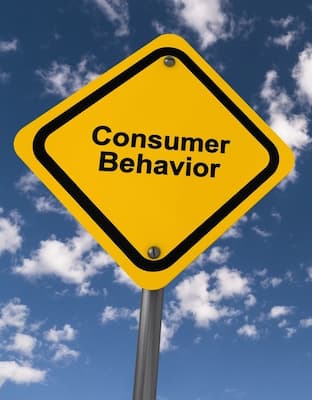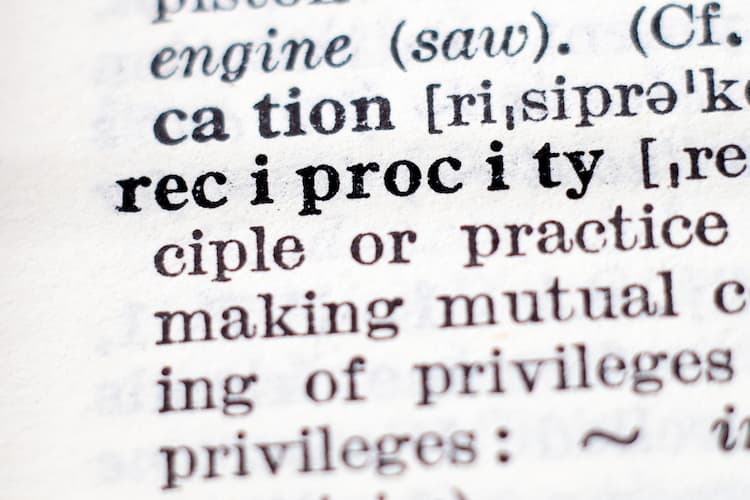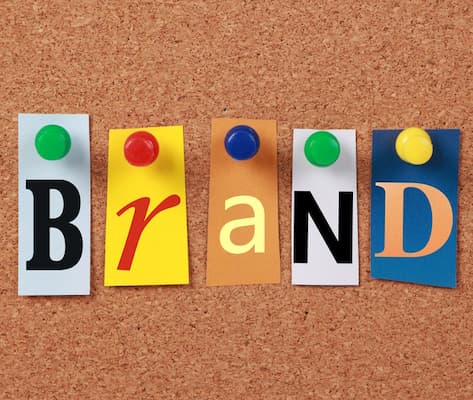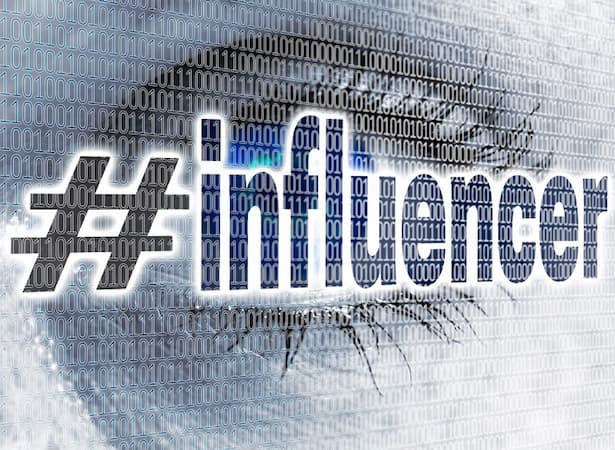Search Results

24 October, 2023
The Psychology of Promotional Products
Promotional products have been a staple in marketing strategies for centuries, from ancient kings distributing coins bearing their likeness to modern corporations handing out branded pens at trade shows. But what drives their effectiveness? To understand that, we need to look at the intricacies of consumer psychology and uncover the underlying reasons behind the power of promotional products.
Tangibility and Perceived Value

The digital age has led to an explosion of online advertisements, from banner ads to sponsored posts on social media. However, despite their prevalence, digital ads often lack the tactile nature that humans innately appreciate. This is where promotional items, with their inherent tangibility, find their strength.
A) The Human Connection to Tangible Items
Humans are sensory beings. We enjoy the feeling of flipping the pages of a book, the weight of a good pen, or the texture of a favourite sweater. It's not just about the functional aspects but also about the emotional connection that comes from engaging with physical objects. Tangible items resonate with the human desire to "feel" in the most literal sense.
Example: Compare receiving a digital coupon via email versus being handed a beautifully designed, tangible discount card. The digital coupon may be swiped away, forgotten amidst a barrage of other emails. However, the tangible discount card may be kept in a wallet, touched frequently, and serve as a physical reminder to visit the store.
B) Perceived Value through Ownership
The act of possessing something tangible enhances its perceived value. Physical items create a sense of ownership which, in turn, can translate to a psychological bond. When a brand is associated with this bond, it enhances the brand's value in the eyes of the consumer.
Example: Consider receiving a high-quality branded umbrella at an event. Every time it rains and you use the umbrella, not only do you appreciate the functional value (it keeps you dry), but there's also a subconscious appreciation for the brand that provided it.
C) The Power of Longevity
While digital ads are fleeting, promotional items often have a longer shelf life. They're not just seen and forgotten; they're used, sometimes daily, to integrate the brand into the life of the consumer.
Example: A tech company distributes branded USB drives at a conference. Attendees might use these drives for months if not years. Each time they save or retrieve a file, they're reminded of the company, ensuring the brand remains top-of-mind.
The tangibility of promotional products offers a powerful counterpoint to the transient nature of digital marketing. It's not just about the physicality of the item but the deeper psychological processes it engages. In understanding this, businesses can leverage promotional items as marketing tools and meaningful touchpoints that foster genuine connections with their audience.
The Rule of Reciprocity

Reciprocity is an ancient and globally recognised principle. Across cultures and societies, when someone does a favour or offers a gift, there's an innate human desire to return that gesture in kind. Dr. Robert Cialdini, in his seminal work "Influence: The Psychology of Persuasion," expounds upon this principle, suggesting that marketers can harness this deeply rooted behavioural response to engender goodwill and promote positive actions.
A) Understanding the Desire to Repay
The feeling of indebtedness when receiving a gift or favour is powerful. We, as humans, tend to dislike feeling beholden to someone. Thus, when given something, the urgency to return the favour becomes palpable, even if the original act was unsolicited.
Example: If a neighbour shovels the snow from your driveway without being asked, you might feel compelled to bake them cookies or help them with another chore in return.
B) Promotional Products as Catalysts for Reciprocity
Promotional products act as those initial unsolicited favours in the business realm, subtly nudging recipients towards various actions, whether purchasing a product, availing of a service, or just fostering positive sentiments towards a brand.
Example: A company distributes high-quality branded tote bags at a trade fair. Those who receive the bags might feel a subtle obligation to visit the company's stall, listen to their pitch, or even make a purchase. The act of accepting the tote bag has already laid the groundwork for this sense of reciprocity.
C) Beyond Physical Products
While they are tangible expressions of reciprocity in marketing, the principle also extends to services or experiences.
Example: A software company offers a free webinar with genuinely useful content. After gaining value from the session, attendees may feel inclined to explore the company's products, sign up for a paid course, or recommend the company to peers.
D) Subtle but Significant Effects
It's crucial to note that when invoked through promotional products, reciprocity doesn't necessarily push consumers to make immediate large-scale commitments or purchases. Instead, it sows seeds of goodwill, trust, and brand appreciation, which can later manifest in various ways.
Example: A local gym offers branded water bottles to people who attend their open day. While not everyone will sign up for membership on the spot, the attendees might discuss the gym with friends, wear the bottle to other fitness activities, or consider joining at a later date, all because of the reciprocity induced by the simple act of receiving.
The rule of reciprocity is a powerful tool in the marketer's arsenal. By understanding and leveraging this principle, businesses can foster deeper connections with potential customers and establish a foundation of trust and goodwill. It's not merely about the act of giving but the intricate dance of human interactions and responses that follow.
Enhancing Brand Recall

The concept of brand recall plays a pivotal role in marketing and consumer behaviour. It refers to a consumer's ability to recognise and retrieve a brand from memory when prompted by a product category or need. One of the most powerful methods to cement a brand in consumers' minds is through promotional items, particularly those with practical value.
A) Functional Utility Equals Visibility
Products that serve a daily function ensure that they aren't discarded, stowed away, or forgotten. Their utility ensures regular interaction, making them live advertisements in the hands of consumers.
Example: A person who receives a branded calendar might place it on their office desk. Each day, as they glance at the date or mark appointments, they're also engaging with the brand name or logo, embedding it further into their memory.
B) Tactile Interaction Amplifies Memory
The act of physically interacting with an object can enhance memory retention. Their tactile nature means that they're not just seen but felt, creating multi-sensory memories.
Example: An IT company distributes mouse pads with their logo. As users rest their hand on the pad and move their mouse, they're not just visually seeing the brand but feeling it beneath their fingertips, enhancing the sensory experience and, by extension, the memory of the brand.
C) Reinforcing Brand Identity and Values
They can be selected to resonate with a brand's identity or values, making the recall not just about the name but also about the ethos of the company.
Example: An eco-friendly brand distributing reusable metal straws or biodegradable shopping bags sends a clear message. Every time a consumer uses these items, they're not just recalling the brand but associating it with sustainability and environmental consciousness.
D) Social Spread Increases Exposure
Functional items often find themselves in social settings, further expanding brand visibility and recall potential among a wider audience.
Example: A sports brand gives away branded water bottles at a marathon event. Participants use these bottles at gyms, parks, and other events, exposing friends, family, and even strangers to the brand. This secondary exposure amplifies brand recall not only for the direct recipient but also for this extended audience.
E) Creating Conversations Around the Brand
Unique or high-quality items can become conversation starters, turning consumers into brand ambassadors.
Example: A company launches a new product and sends out beautifully crafted, branded notebooks made of unique materials. Recipients might show these off in meetings or social gatherings, leading to conversations about the brand and the new product.
Products, particularly functional ones, do more than just provide immediate value to the recipient. They act as ongoing brand reminders, subtly nudging consumers towards a deeper brand association. By understanding the psychology of brand recall, companies can select products that serve their immediate marketing needs and secure long-term brand loyalty and recognition.
Creating Emotional Connections

Emotions are the undercurrents of our decisions, thoughts, and behaviours. While logic and reason are important, emotional resonances often drive our most memorable experiences and shape our brand perceptions. Through well-chosen promotional products, brands can ignite these emotions, forging deeper and more lasting connections with their audience.
A) The Power of Nostalgia
Tapping into past sentiments can create a powerful bond between the brand and the consumer.
Example: A candy company reintroduces a discontinued product from decades ago and pairs its launch with promotional keychains that resemble the original candy packaging. For older consumers, using this keychain could evoke fond memories of their childhood, creating a nostalgic connection to the brand.
B) Invoking a Sense of Belonging
Brands can cultivate a sense of community and belonging through products that resonate with a particular group or culture.
Example: During Pride Month, a brand might distribute rainbow-coloured wristbands with their logo. For members and supporters of the LGBTQ+ community, this wristband isn't just a promotional item—it's a symbol of acceptance, inclusion, and pride, strengthening their emotional bond with the brand.
C) Comfort and Assurance
Items that offer comfort in daily life can associate a brand with feelings of relief and security.
Example: An insurance company distributes branded emergency car toolkits. This toolkit isn't just practical for the recipients—it represents preparedness and safety, reinforcing the brand's image as a reliable protector during unexpected events.
D) The Joy of Novelty
Introducing unique products can evoke excitement and curiosity, making the brand memorable.
Example: Instead of distributing the usual pens or notebooks, a tech startup gives away branded VR cardboard viewers at a trade show. The novelty and fun of this promotional product can associate the brand with innovation and forward-thinking.
E) Reinforcing Quality and Excellence
High-quality items can reflect the excellence of the brand, leading consumers to associate the brand with reliability and superiority.
Example: A luxury watch brand might give out finely crafted leather watch pouches during a special promotion. Every time a consumer uses this pouch, they're reminded of the brand's commitment to quality and craftsmanship.
F) Fostering Shared Values
Products can be a medium to communicate shared values, beliefs, or causes, making consumers feel aligned with the brand's mission.
Example: A brand dedicated to environmental sustainability might distribute seed-infused paper bookmarks. As consumers plant these bookmarks and watch them grow into flowers, they are constantly reminded of the brand's shared value of nurturing nature.
Promotional products are more than just physical tokens; they're vessels of emotion. When selected thoughtfully, they have the power to convey stories, values, and sentiments, etching the brand deeper into the hearts of consumers. As emotions significantly influence purchasing decisions and brand loyalty, tapping into them becomes a strategy not just of marketing but of meaningful connection.
Amplifying Social Proof

In our interconnected world, the opinions and actions of others significantly influence our choices. Social proof, a psychological phenomenon where people take cues from the behavior of others to make decisions, is a powerful tool in the marketer's arsenal. Leveraging promotional products in this context amplifies brand visibility and value through the simple act of public endorsement.
A) Visibility as Validation
Seeing someone use or wear a branded item in public spaces provides an implicit endorsement of the brand.
Example: Imagine walking through a crowded park and noticing multiple individuals wearing caps bearing the logo of a new fitness app. The sheer visibility, coupled with the act of public endorsement, elevates the app's credibility and might pique your curiosity to check it out.
B) Affiliation with Influencers
When influential figures use or showcase promotional products, it adds substantial weight to the brand's value.
Example: A popular local musician might post a photo on social media sipping coffee from a mug with a bookstore's logo. Fans, seeing this, might be inclined to visit the bookstore, associating it with the tastes and preferences of someone they admire.
C) Group Dynamics and Belonging
Branded products can create a sense of community, and the desire to be part of a group can act as a strong motivator.
Example: At a tech conference, attendees might notice that many participants are carrying tote bags from a specific software company. Not wanting to feel left out, they might seek out the company's stall to procure a bag and learn more about the brand that everyone seems to be endorsing.
D) Sparking Conversations
They can be conversation starters, leading to organic discussions about the brand.
Example: Someone might compliment another person's unique branded keychain or ask about the logo on their t-shirt. These casual interactions become opportunities for brand enthusiasts to share positive experiences, reinforcing the value of the brand to potential new customers.
E) Shared Experiences Boost Credibility
Seeing someone else use a product can also spark a sense of shared experience, boosting brand credibility.
Example: If a traveller spots someone in a foreign airport using a luggage tag with the logo of a travel agency they're familiar with, it reinforces the agency's reputation, connecting travellers through a shared brand experience.
F) Subtle Over Overt Marketing
They offer a more subtle approach compared to aggressive marketing tactics, making the endorsement seem more authentic.
Example: Rather than being bombarded with online ads, seeing a friend use a branded water bottle from a local gym might encourage someone to consider joining, trusting the implicit endorsement over explicit advertising.
Promotional products serve as silent ambassadors for a brand, leveraging the power of social proof. As humans, our choices are often shaped by the validation and behaviour of those around us. By understanding and harnessing this principle, brands can amplify their presence and credibility in the market, turning everyday users into influential endorsers.
The Novelty Effect

Human beings are naturally drawn to what's new and different. The unfamiliar captures our attention, sparking curiosity and intrigue. This natural inclination, often called the "novelty effect," is a compelling factor in marketing and consumer engagement. When businesses introduce unique promotional products, it can amplify brand awareness in unexpected ways, making it a potent strategy in today's dynamic marketplace.
A) Standing Out in the Crowd
The typical branded pen or notebook might get lost in the shuffle in a world of advertisements and promotions. However, a novel promotional item grabs attention simply because it's different.
Example: Instead of the usual keychains or badges, a company releases a branded 3D puzzle. This product's uniqueness captures interest and provides an engaging experience, ensuring longer interactions with the brand.
B) Stimulating Conversations
Innovative products can become conversation starters, naturally leading to organic discussions and word-of-mouth marketing.
Example: A coffee shop introduces temperature-sensitive mugs that change colour with the heat of the drink inside. Fascinated by this feature, customers might share their experiences with friends or post videos of the colour transition on social media, inadvertently promoting the brand.
C) Encouraging Social Media Shares
Unique products are more likely to be shared on platforms like Instagram, Twitter, and Facebook, amplifying brand reach.
Example: A cosmetic brand offers a promotional makeup brush that, when shaken, produces a beautiful cascade of floating glitter inside its handle. Enthusiastic recipients might take to Instagram to showcase this captivating effect, tagging the brand and thereby exposing it to a broader audience.
D) Strengthening Brand Image
By offering innovative items, brands can position themselves as forward-thinking, creative, and in tune with the latest trends.
Example: An eco-conscious brand distributes seed-infused business cards. When planted, these cards grow into wildflowers. This novel approach captures attention and strongly reinforces the brand's commitment to sustainability.
E) Creating Memorable Experiences
Novel items can provide memorable experiences that remain etched in consumers' minds, fostering a deeper emotional connection to the brand.
Example: At a book fair, a publisher gives away branded bookmarks that come with a QR code. When scanned, it narrates a snippet of an upcoming novel. The blend of traditional reading with modern technology creates a unique experience that attendees are likely to remember and share.
F) Enhancing Perceived Value
Receiving something novel and unexpected can enhance the perceived value, making recipients feel special and valued.
Example: As part of a product launch, a tech company sends out limited-edition branded virtual reality (VR) viewers to a select group of loyal customers. The novelty and exclusivity of the product increase its perceived value, deepening customer loyalty.
The novelty effect taps into a fundamental human trait: our attraction to the new and unique. By integrating this understanding into marketing strategies, brands can ensure that their promotional efforts don't just reach their target audience but resonate and leave a lasting impression. In an age of fleeting attention spans, the power of novelty remains undiminished, offering brands a distinct edge in a competitive marketplace.
Conclusion
Promotional products aren't just about slapping a logo on an item. They tap into deep-seated psychological principles, influencing behaviour and brand perception. By understanding the subconscious impact of these products, marketers can craft more effective and resonant campaigns.
Businesses seeking to harness this power should choose items that align with their brand and consider the psychological effects they wish to elicit in their audience. As we've seen, the true impact of these products goes far beyond their physical presence, making a lasting impression in the minds of consumers.
The PromotionsOnly Team

